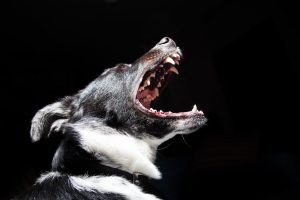
February is Pet Dental Health Month
February is Pet Dental Health Month and just as humans suffer with oral problems so do your dogs. Looking after your pets teeth, is an important part of keeping your pet healthy as symptoms relating to the mouth can tell you a lot about the general health of your pet. Studies show up to 80% of dogs over the age of 3 have some form of dental disease.
If you regularly clean your dogs teeth this will keep gums and teeth healthy; avoid pain, smelly breath and eating issues. Poor mouth hygiene allows bacteria to build up and worst case scenario, will get into the blood stream and affect other organs causing more serious problems.
- Ways you can keep on top of your pets dental health are:
Brush their teeth – this isn’t always easy but following the tips below may help you get your dog used to this strange process - Tooth cleaning biscuits or dental chews
- Teeth cleaning solutions in which you add to their water, which act similarly to human mouthwash
- As part of a raw diet, you feed bones. This will also clean the teeth very well and possibly eliminated the need for brushing so often – Wren and Raven get their teeth brushed less and less often since being on a raw diet, bones keep their teeth pearly white.
- Professional cleaning – this is done by the vet and should not be done as an alternative, you should desensitise your dog to teeth brushing as much as you can due to undergoing anaesthetic if done by the vet.

Teeth brushing training
Difficulty of training Easy
Timescale of training 1 – 2 weeks dependant on commitment
Desensitising your dog to having their teeth brushed is not just about having sparkling and healthy teeth it also allows you and the vet the ability to check and have your fingers in their mouths without them being uncomfortable, reducing the risk of biting.
NOTES: never use human toothpaste, it contains Flouride which is toxic to dogs. Picking a toothbrush is important I find and double headed brush with the bristles at an angle is the easiest and best to use.
1. Start with your fingers. Get your dog used to touching their mouths and inside their mouths. Before you begin brushing, play with their lips and gums; several times a day for a few days.
2. Introduce the toothpaste. Put a little tooth paste on your fingers as you touch their lips and gums, letting the dog lick the paste; once per day for a few days
3. Introduce the toothbrush. With a little bit of toothpaste on the brush let them lick and sniff at the brush, showing them its nothing to be afraid of. You may have to do this a for a few days before they let you put it in their mouths.
4. Brushing. Do not brush all the teeth in one go, build it up by brushing a few at a time allowing your dog to get used to the sensation.
5. Reward. Be sure to reward your dog each time he allows you to put the brush in their mouth or brush their teeth.
6. Build it up. Once your dog is used to all the steps above; you will be able to increase the length of time and number of teeth you brush.
Loading Likes...


